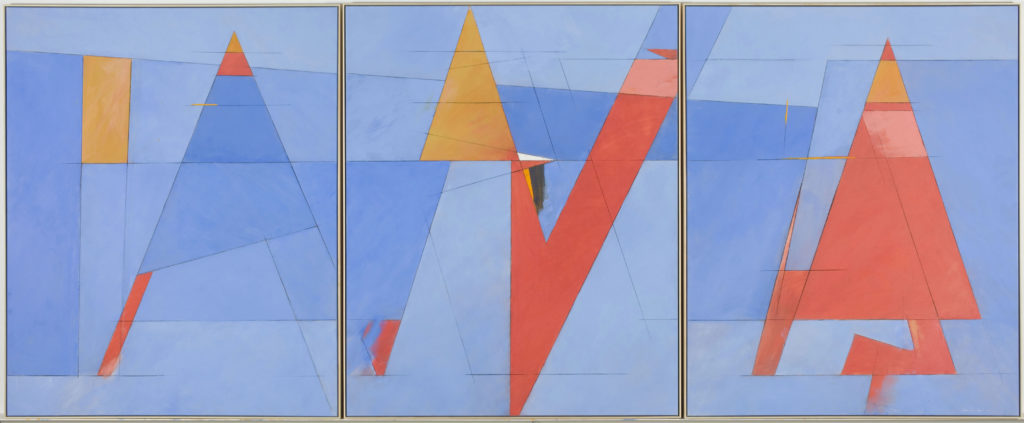Blå sjøutsikt

The Finnish Norwegian artist Irma Salo Jæger (b.1928) has been a prominent figure in the Norwegian art world since the 1960s; by virtue of her strong political activism for the welfare of artists, and not least, through her own significant oeuvre.
With unwavering persistence throughout her entire career, Irma Salo Jæger has worked with the formal aspects of painting where very little is left to chance. The pictorial structure, composition and palette are meticulously toned and modified. Seen in retrospect, one can sense that she has developed through several phases; from the lyrical, melancholic works based on natural elements of the 1960s, to a bold neo-expressionist painting from the end of the decade and through the 70s, and on to a classical and more restrained idiom during the 80s and 90s, which she has since developed further. Her pictures have an assertive and uncompromising character; here you will find no facile scattering of paint on the canvas, no superficial ornamentation, but pictures that have seemingly forced their way into being. Pictures that had to be created perforce.
The triptych Blue Seaview (1998) is characteristic of Irma Salo Jæger’s mature, serene style of painting. The picture has a radically abstract expression and a motif that is not immediately recognisable, yet the title suggests that it has to do with a transformed mental impression; the sea, sun, sky, horizon and a sailboat are all dimly perceived.
Irma Salo Jæger was educated at The National College of Art and Design (1954–57) and The National Academy of Fine Arts (1958–61), and in addition has a PhD in Art History from the University of Helsinki. During the years 198–1992 she was a professor at the National Academy of Fine Arts in Oslo. Salo Jæger has executed a number of commissioned works in public places and is also represented in numerous Norwegian and international, private and public art collections. The DNB Savings Bank Foundation has 12 of her works in its collection and her entire oeuvre is represented, from the early 60s to her current production.
OWG